It was the worst wildland-urban fire in California history up to that point. Hundreds of homes were incinerated despite every firefighter in Los Angeles being called up in an unsuccessful effort to fight the Santa Ana winds. Hydrants ran out of water as 50-mph “devil winds” drove fires fueled by “the fastest burning ground cover in the western hemisphere” across major highways that would normally provide sufficient fuel breaks. Famous movie stars, writers, and composers lost their homes and a former vice president of the United States was photographed spraying water from a garden hose on the cedar shake roof of his rented house to protect it from the flames.
Other than a ban on wooden roofs, little has changed since the Los Angeles Fire Department made this film after the Bel Air Fire of 1961.
Just two years before this fire, the National Fire Protection Association had studied Los Angeles and declared (according to the above film) that “combustible-roofed houses closely spaced in brush-covered canyons and ridges serviced by narrow roads” was a “design for disaster.” They were ignored, but the 1961 Bel Air Fire, which burned 6,000 acres and 484 homes, was something of a wake-up call. After the Los Angeles Fire Department made the above film, the city banned wood-shingled roofs and required some landowners to clear their properties of brush.
Banning flammable roofs was a good start but by itself it wasn’t enough to stop more destructive fires in Los Angeles County. As a fire chronology shows, the Wright and Clampitt fires burned 183 structures in 1970. The Agoura-Malibu firestorm burned more than 1,600 structures in 1978. In 1993, the Kinneloa and Old Topanga fires burned more than 500 structures. In 2003 the Curve and Williams fires burned nearly 250 structures. In 2008, the Sayre Fire burned 600 structures including nearly 500 homes. In 2017 the Rye and Creek fires burned 129 structures including 60 homes. At least 15 smaller fires collectively burned some 300 structures. This year, the Palisades and Eaton fires are so far officially reported to have burned 4,000 structures but unofficial reports put the number at more than 12,000.
Since the Bel Air Fire, the environmental movement promoted the preservation of hundreds of thousands of acres of chaparral in parks and open spaces, thus making permanent the danger to LA homeowners. This included the Santa Monica Mountains National Recreation Area was created in 1978, and 83 percent of it burned in the Woolsey Fire of 2018. The state of California created the Santa Monica Mountains Conservancy in 1980, which has since protected another 72,000 acres of chaparral from development, at least some of which burned in this year’s fires. In addition, state parks created in the 1960s and 1970s cover around 20,000 acres of the Santa Monica Mountains. The trustees for these properties aren’t required to clear the “brush” on their land.
Not surprisingly, the LA fires have become as politicized as every other major news story. Contrary to claims, these fires aren’t evidence of climate change. As technology journalist Tristan Greene notes, “high severity fire in chaparral has been normal as far back as we can look.” The damage from such fires has increased mainly because more homes, and more valuable homes, have been built in fire-prone areas.
Nor were these fires worsened by DEI. Los Angeles’ fire chief may be gay, but she has solid credentials and has been warning of the negative effects of cuts to her department’s budget for months.
Even if the fire department had been fully funded, however, it wouldn’t have been able to do much about the chaparral-fueled fires spread by the Santa Ana winds. Firefighting standards call for 15 to 43 firefighters for each burning house. Los Angeles’ 9,000 firefighters is enough for 200 to 600 homes. With thousands of homes burning each day over the last few days, LA would need at least five times its current number of firefighters on call to be ready for fires that happen only once every few years.
The fires are also not the result of urban sprawl, at least not by what people typically mean by sprawl: housing densities that decline with distance from city centers. The low-density housing found at the edges of truly sprawling regions such as Atlanta, Dallas, and Houston are actually the ideal buffer strip protecting such regions from wildfire.
At more than 8,000 people per square mile, Los Angeles is the seventh-densest major city in the country. It covers a lot of land only because it houses a lot of people, but various greenbelts and growth boundaries prevent it from having much truly low-density housing. This lack of true sprawl is what makes LA neighborhoods so vulnerable as houses are crammed in relatively dense 5,000-square-foot lots right up against the chaparral. Those homes are built mainly of wood and when one house catches fire, the radiant heat from that fire will ignite other structures 20 to 40 feet away.
Those who say that the solution is more thinnings and prescribed burnings don’t understand chaparral ecology. Prescribed burning can reduce fire hazards in the ponderosa pine forests of the Sierras. But chaparral is a completely different kind of ecosystem in which natural fires took place much more rarely. Frequent prescribed fires can actually make chaparral more fire-prone by inviting non-native species.
Those who think that more water tanks and reservoirs would have solved the problem ignore the fact that water isn’t really the right tool for dealing with landscape-sized firestorms. Plus, when thousands of homes are burning at once, even the most generous water supplies will get overwhelmed.
The most sensible suggestions have come from retired Forest Service fire researcher Jack Cohen and fire historian Stephen Pyne and from chaparral ecologist Richard Halsey. Instead of permanently staffing the fire departments with enough people and providing enough water supplies to deal with once-a-decade events, they say, people need to take responsibility for fireproofing their own property. As Halsey says, we need to fireproof communities “from the house out rather than from the wildland in.”
This means building homes with materials that will not ignite even if a neighbor’s home is burning furiously. It also means surrounding those homes with largely non-flammable landscapes: grass lawns are okay; eucalyptus trees and other flammable plants are definitely not.
It would help if the insurance companies that abandoned southern California came back to insure only properties that are built to fireproof standards. Unfortunately, when those companies left, California started its own insurance program, signaling homeowners that the government would take care of them even if they continued to fail to protect their properties from wildfire.
Even if insurance companies only covered firewise properties, regulation in the form of strict building and property management codes will be needed if only because some people won’t get insurance and thus won’t have an incentive to build responsibly. As the above video notes, “you are only as safe as your neighbor,” and based on that principle, even many libertarians would agree that some regulation is needed.
If Pacific Palisades homes had all been built of concrete blocks or other fireproof materials, it wouldn’t matter how many firefighters LA had as few of the homes would have caught fire. Nor would the lack of multiple escape routes from places like the Summit have mattered as many people could have stayed in their homes during the fires since the only threat to them would be smoke. Los Angeles should quickly write new building codes to ensure that homes built to replace those destroyed in the 2025 fires will be safe from future fires.
It is also important that owners make changes to existing unburned homes remaining in fire-prone areas. The city should require that yards of homes located downwind of chaparral hills be designed and managed to firewise standards. That means cutting down trees that are clustered together, removing trees and brush that are up against homes and other structures, and trimming the lower branches from any trees left behind. Gravel, concrete, or pavers should be installed in a five-foot perimeter around all structures.
While it might be too much to demand that existing homes be completely rebuilt with fireproof materials, the city should require property owners to take relatively low-cost steps to protect their homes from ignition. Roofs are already supposed to be non-flammable, but plenty of other parts of homes can still be vulnerable to fires, including vents, eaves, decks, porches, and windows.
As described in this report, vents and soffits “can be weak links in a fire,” allowing burning embers to enter the home. Homeowners should shield all vents with wire screens with one-quarter-inch or smaller openings and install fireproof soffits in all eaves. Wooden decks and porches should be rebuilt with Trex or other non-flammable materials. Ordinary glass windows should be replaced with tempered glass.
California and Los Angeles could offer homeowners grants covering, say, half the costs of these changes. This would be less expensive in the long run than fighting more firestorms and paying out insurance to homeowners who didn’t bother to fireproof their properties.
Millions of people in the West live in a fireplain. We can’t prevent wildfires in such areas and it is futile to try. What we can do is protect ourselves and our homes from those fires. Those of us who live in fire-prone areas owe it to our neighbors as well as ourselves to make our homes and properties as fire resistant as possible.
Despite more than a century of wildland fires spreading into its neighborhoods, Los Angeles has so far failed to ask its residents to do that. As the ash settles from the 2025 fires, local taxpayers should press the city to fix this.

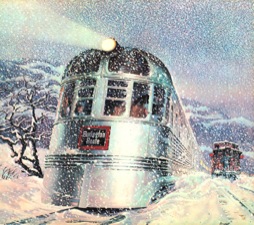
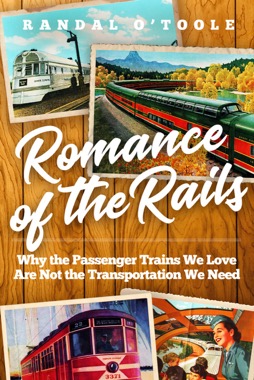
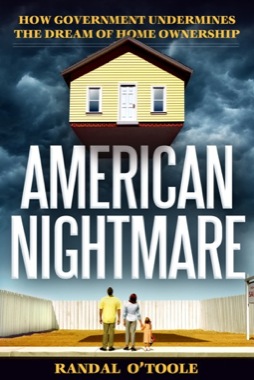
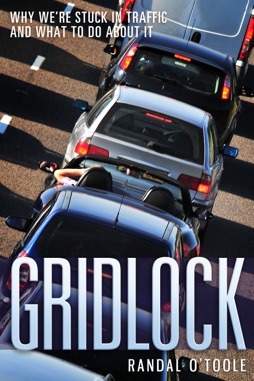
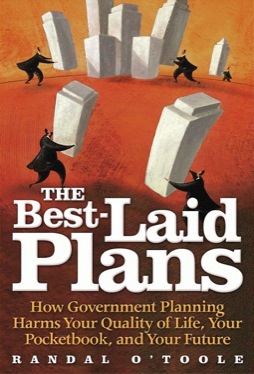
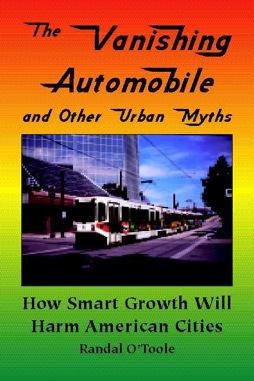
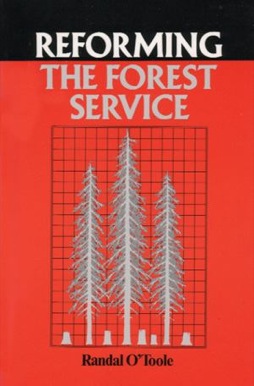
1. No mortgage or home-equity-line-of-credit without first passing an annual fire-risk inspection.
2. No home insurance without first passing an annual fire-risk inspection.
3. No mortgage or home-equity-line-of-credit without the city passing a fire-risk inspection that includes its fire-fighting capabilities.
We require a vehicle inspections, why not home/building inspections.
Insurance companies require fire and safety inspections before insuring commercial buildings and without insurance there would be no financing (mortgage, construction etc.).
Ohio has specific inspection requirements for vehicles including periodic safety inspections and emission tests. These requirements aim to assess the vehicle’s condition, functionality, and emissions to ensure it meets the necessary standards for safe and environmentally friendly operation. Why not the same for buildings?
As the above video notes, “you are only as safe as your neighbor,” and based on that principle, even many libertarians would agree that some regulation is needed.
The last thing California needs is more building regulations, especially at the state level. This libertarian believes market incentives work better, and any regulation should be at the private homeowner association level.
Tumalo Joe,
I’d like to agree with you, but if market incentives work better, then how did we get to where we are today? Notice how many of the people interviewed on news reports say things like, “Why didn’t the government do more to save my house?” and not “Why didn’t I do more to save my house?”
In the past I’ve argued that what a person does should be between them and their insurance company. That makes sense in really low density areas, but if houses are build 20 feet apart, what one homeowner fails to do can destroy the best-kept homes that are next door.
Thanks for your reply, Antiplanner.
How did we get where we are today? Because of massive government intervention in markets.
People have become dependent on an interventionist government that seeks nothing more than confiscation of wealth and does not and cannot deliver on the services it promises. People crying for government to save them need to hear that no one is coming to save you before they’ll stop abrogating their responsibility to government bureaucrats.
“if houses are build 20 feet apart, what one homeowner fails to do can destroy the best-kept homes that are next door.”
People choose to live 20 feet from their neighbors in fire-prone areas. No one is being forced to live in Pacific Pallisades, which has a median list price of $4.5 million. Homeowners associations, if they allow tight building, should address required building materials, prohibited vegetation, defensible space, etc. The government is simply too inept, corrupt, and greedy to effectively address the issue, as you have expertly shown in your detailed and well-researched article.
Tumalo Joe wrote, “People choose to live 20 feet from their neighbors in fire-prone areas.”
Not people … the second builder made the 20 foot separation decision by building his/her home 20 feet from the first.
Copilot tells me, “When it comes to private nuisance laws, libertarians typically support them because they align with the principle of protecting property rights. The idea is that individuals should be free to use their property as they see fit, as long as they do not infringe on the rights of others.
For example, if someone is causing excessive noise or pollution that affects their neighbor’s ability to enjoy their property, libertarians would argue that this constitutes a violation of property rights and should be addressed through private nuisance laws. The focus is on resolving disputes between individuals without excessive government regulation.”
Tumalo Joe,
Planners zoned Pacific Palisades for small lots. Some people chose to build on those small lots. Some didn’t, but enough did to fill them all up. Few chose to build with non-flammable materials, making them vulnerable to what their neighbors did. Many chose to landscape their lots in ways that made them even more vulnerable.
I’d like to believe that the free market will lead people to do it right as they rebuild after these fires, but all evidence indicates they won’t. Maybe regulation isn’t the answer, but someone should start lobbying the insurance industry to get them to tighten their standards.
“I’d like to believe that the free market will lead people to do it right as they rebuild after these fires, but all evidence indicates they won’t.”
While it’s challenging to quantify the exact number of land use regulations at the state and local levels, California has enacted over 100 substantial housing-related land use bills since 2016. The free market can’t lead people to do it right because the free market does not exist.
“Maybe regulation isn’t the answer, but someone should start lobbying the insurance industry to get them to tighten their standards.”
Insurance companies declined to renew homeowner coverage the affected area because insuring these properties would result in bankruptcy. They’re being called “greedy” for it, and anti-capitalist sheep are calling on the government to “do something!” (like jail time and fines for insurance company workers) as they always do.
Thanks again for your thoughtful replies and for this discussion. I’m not sure of a solution, other than to not build in hilly chaparral environments. And if I did find myself living in such an area, and someone’s house was 20 feet away, mine would be a concrete bunker.
Thanks for your reply, rovingbroker.
While planners zoned the land, and builders made a 20 foot separation, someone (likely a very wealthy someone) chose to buy the property. The owner is ultimately responsible for the decision and for property safety.
Regarding generative AI’s assessment of libertarianism, I’m unsure the point you’re trying to make, and I urge caution. GenAI has been trained on the web, including Wikipedia, and it’s hardly accurate and unbiased. (I doubt the claim “most libertarians support nuisance laws” can be supported.) But Copilot states libertarians support private (non-governmental) rules, which was the point I was getting at.
Government regulations (and government itself) are ineffective, as evidenced by this fiasco.
California would wishbspend 128 BILLION dollars on a train no one will ride, nor can they til 2040 when it’s supposedly completed…..
Enough to build 50 count em 50 desalination plants, with enough money left over to run them for 40 years straight.
The Carlsbad plant produces 50 Million gallons daily. 50 plants could produce 2.5 Billion gallons a day, enough to fill 3,700 Olympic swimming pools.
Thanks to Tumalo Joe for the adult discussion. I’ll sign off with … “Alas, life is much more complicated than that.” Important to remember.
Life’s More Complicated than the Non-Agression Principle
Southern California is an earthquake prone area. Concrete is brittle and performs poorly in such areas. Even small seismic events causes microcracks that weakens the structure over time.
Contrary to what many people understand, wood frame houses are the best materials in terms of earthquake performance for single-family homes.
At more than 8,000 people per square mile, Los Angeles is the seventh-densest major city in the country…. And not even on top 100 list in world.
Los Angeles is Half the density of Tokyo; Depsite the incredible density and wooden homes in tokyo metro area Fire is rare urban phenomena (also it’s wet climate mitigates that risk)
But there are Plenty of Dense, DENSER cities worldwide with Hot,dry climates.
– Barcelona
– Monaco
– Rome
They set forth Water demands as cities grew.
Spain is largest European consumer of Desalinated water.
With 100 Big plants.
https://www.aquatechtrade.com/news/desalination/desalination-in-spain
Community fire brigades, like the one in Rosenbloom’s neighborhood, also play a critical role. These groups are equipped with tools like Hainy Hydrants and pumps connected to swimming pools, enabling them to extinguish small fires and assist firefighters. “It gives a sense of comfort to our community,” said Matt Haines, the hydrant’s developer and a firefighter.
Ugh. I was trying to post from my iPhone, which was tedious and didn’t work out. Here’s the full post:
There’s a relvant article in today’s Wall Street Journal titled These L.A. Homeowners Installed Private Fire Hydrants. Here’s How They Fared. The article shows that having water is effective in saving individual homes, and it shows that those who take responsibility for their property fare better than those who don’t.
The article is paywalled, so here’s a summary for those without a subscription:
The article discusses how private fire hydrants and water systems have helped some Los Angeles homeowners protect their properties during devastating wildfires. In neighborhoods where the majority of homes burned, those equipped with personal fire hydrants, pool pumps, and rooftop sprinklers fared significantly better.
One example is Brent Woodworth, chairman of the Los Angeles Emergency Preparedness Foundation. When wildfires approached, firefighters used his private hydrant to save his home and two neighboring properties. When the hydrant’s pressure dropped, Woodworth used a pump to draw water from a nearby swimming pool. “The hydrant and pool pump definitely helped,” he said, noting that his was one of only three houses that survived in a neighborhood where 80% of homes were destroyed.
Kevin B. Rosenbloom in Malibu used similar methods, combining rooftop sprinklers, bathtubs filled with water, and his own private hydrant to defend his home. “It’s mentally stressful. I’m sleeping with one eye open,” he said, describing the toll of constant vigilance. His neighborhood also benefited from a community fire brigade that quickly extinguished spot fires.
The article highlights the increasing prevalence of private hydrants in wildfire-prone areas, emphasizing their effectiveness when public systems fail. For example, during the Pacific Palisades fire, public hydrants ran dry, but private systems like those used by developer Dustin Khaleghi allowed homeowners to keep fighting fires. Khaleghi’s Malibu property features a private 7,500-gallon water tank and diesel generator, which he says will likely attract buyers.
Community fire brigades, like the one in Rosenbloom’s neighborhood, also play a critical role. These groups are equipped with tools like Hainy Hydrants and pumps connected to swimming pools, enabling them to extinguish small fires and assist firefighters. “It gives a sense of comfort to our community,” said Matt Haines, the hydrant’s developer and a firefighter.
“It’s mentally stressful. I’m sleeping with one eye open,” he said, describing the toll of constant vigilance.
Or you could just live in an actual city.
Misleading data.
Population density isn’t exactly correlated to housing density.
CA has lots of overcrowding housing especially in immigrant areas.
High density also doesn’t mean more transit and pedestrian oriented. High rises can be car dependent if surrounded by parking and arterial routes.
I do support removing growth boundaries BUT if CA was 100% urbanized, Malibu would still be unaffordable
Lot houses in Los Angeles were 50-100 years old. In Said time frame, DID NOT BURN DOWN.
The fire severity was due
– criminally negligent arsons many committed by migrants, illegals and homeless mentally ill folks.
– severe dry winds
But biggest culprit was state California doing nothing address decades water demand issues.
What lesson was there for LA when the state countermands all decision.
Will LA ever learn…. will California?
Ok. I’ll say it. Who remembers “Chinatown”?
Chinatown is a 1974 American neo-noir mystery film directed by Roman Polanski from a screenplay by Robert Towne. The film stars Jack Nicholson and Faye Dunaway. It was inspired by the California water wars: a series of disputes over southern California water at the beginning of the 20th century that resulted in Los Angeles securing water rights in the Owens Valley.
Chinatown
“The fires aren’t evidence of climate change”
“Chinatown”
Like I said before YOU LIVE IN A SEMI-DESERT
that gets only 12-14 inches of rain a year.
In the movie, water was PURPOSELY released in order to drive the land owners out and create support for a dam through an artificial drought. Mulholland was able to figure out that because of faulty valves and gates in the water system, large quantities of water were being released in the overflow sewer system and then into the ocean. an Irish American self-taught civil engineer who was responsible for building the infrastructure to provide a water supply that allowed Los Angeles to grow into the largest city on Western US.
All out war from locals who even tried to Dynamite the Aqueducts.
Drought is a human term; in nature dry seasons allow wildfires to clear out vegetation scrub, cull herbivore populations and begin again for adverse coming of rain.
The solution mitigating Californias (as well as many Western) Wildfire problems (Not fixing, which it shouldn’t ecology of region fixed on this type of regeneration) but huge help deter catastrophic types of fires that burns hundreds of thousands of acres a year.
1: Install rainwater recharge pits. When a well is depleted or low productivity, it is often abandoned or they dig an adjacent well which may fail. Instead, the surrounding area around the well would be dug up and replace it with a surrounding pit of rock and gravel and filtering sand….. and channel rainwater to refill the well; a filter membrane of activated charcoal, Sterilized sand will suffice. Water from Agricultural runoff, treated water.
2: Permeable Hardscape. Despite the appearance of green, half or more landscape in suburban or inter-urban areas are in fact hardscape, thus impermeable. With hardscape water cannot penetrate and just runs off down street to storm drains, the LA River is just One large GUTTER more famous in movies for Car chases than storm water management.
https://www.youtube.com/watch?v=6z9qws7M8q8
Los Angeles covers 469 square miles, so even an inch of rain produces 4 BILLION gallons of (Equivalent to 6000 Olympic Swimming pools) most of which sweeps across impervious surface to enter the storm drain and exit via the canals/river, Making our hardscape semi-permeable
https://www.youtube.com/watch?v=huO_NRn34GI
3: Rain Garden. Unlike traditional gardens which are often maintenance heavy and water thirsty; the Rain Garden is a planted depression often ignored infill; re-engineered soil medium to capture considerable portion of the rainfall that goes into it. The first were invented in Prince Georges County, Maryland in 1990 to mitigate cost of typical suburban/urban style drainage/gutter and stormwater diversion and years after first trial run in Somerset cut stormwater run off 75%.
4: Vegetation bans: Southern California signature visage of Tropical gardens in Hollywood hills; come at significant price of heavy water use. When hit with drought, they dry out and become instant kindling. LA is littered with tons invasive and non-native plant species meant to look good, but are water thirsty or worse Fire prone including many introduced Eucalyptus with oil saturated bark. California fan palm (\(Washingtonia filifera\) is only palm native to California; they are also survive periodic natural blazes. Gardens and landscapes sensitive to capabilities and natural rainfall of the region.
Weedy/fire prone invasives should be largely banned and eliminated.
https://www.youtube.com/watch?v=z8xtngHPwtI
A casual inspection of surviving Palisades homes amid complete devastation reveals that these homes are midcentury – without attics. No vents enabling embers to get sucked into the attic.